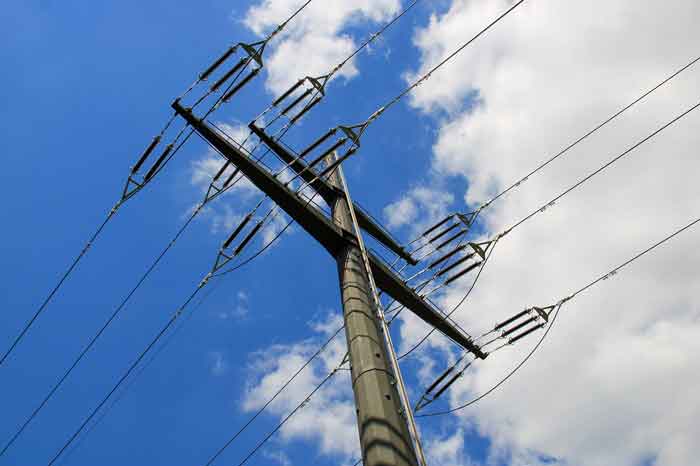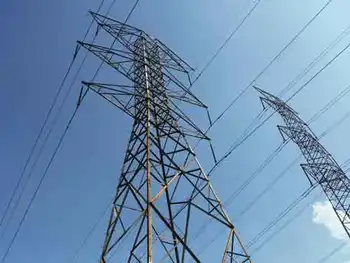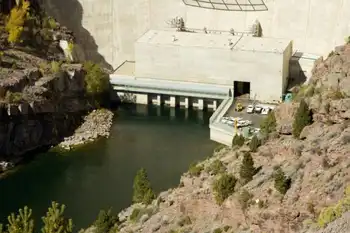Ontario approves Great Lakes wind power
By Toronto Star
High Voltage Maintenance Training Online
Our customized live online or in‑person group training can be delivered to your staff at your location.

- Live Online
- 12 hours Instructor-led
- Group Training Available
A Ministry of Natural Resources official says the department is "getting ready" to make an announcement and that new minister Donna Cansfield is "anxious to demonstrate leadership in the area."
Jamie Rilett, a spokesperson in Cansfield's office, confirmed that the ministry is currently revisiting the moratorium. He said a decision would be made "shortly."
Industry sources also confirmed the moratorium's end is imminent.
Offshore wind energy, while typically associated with ocean projects, offers significant opportunities in the Great Lakes. According to one study by Helimax Energy Inc., the strong and consistent winds typically over the lakes could generate up to 47,000 megawatts of clean electricity – nearly double Ontario's existing power capacity.
The ministry put a halt to all offshore development in November 2006 to give the government more time to study the potential environmental impact of such projects on bats, butterflies, aquatic species and bird migration routes.
But the moratorium caught some wind developers off guard, particularly those trying to raise money for their proposed projects.
The wisdom of halting development was also called into question when it was discovered that some U.S. states, such as Ohio, were actively moving forward with offshore projects in Lake Erie despite the Ontario policy.
The moratorium followed a protest against an offshore wind project near Leamington, Ont., in September 2006. Nearly 300 residents showed up to a council meeting to protest a 119-turbine project planned by developer Southpoint Wind Power. Council unanimously rejected Southpoint's proposal and urged the ministry to come up with guidelines that would help small communities evaluate offshore projects.
"There were a number of serious concerns," said deputy mayor Robert Schmidt, explaining that many residents saw negative impacts on lake navigation, bird and butterfly migration, recreational boating and fishing.
"The biggest issue to most residents was how it affected their view of the lake, which is really only the last natural view we have in our area."
Schmidt said a number of offshore proposals still wait in the wings.
"The majority of people aren't against the idea, as long as it's located in an area where it doesn't cause problems."
Energy consultant Paul Bradley, manager of PJB Energy Solutions and former vice-president of generation at the Ontario Power Authority, said offshore projects hold great potential but are also a huge technical challenge.
"They're all-or-nothing projects," he said. "You've got to collect all that power from each turbine, aggregate it, and then bring it in efficiently through an underwater cable."
The best wind resources tend to be far from where power is consumed.
One of the biggest challenges is to bring wind-generated energy to communities in southern Ontario without breaking the bank on building high voltage transmission lines, which cost about $3 million a kilometre to construct.
Toronto Hydro Corp. has considered an offshore wind project in Lake Ontario near the Scarborough Bluffs. That wind farm would have a capacity of up to 200 megawatts.
"In the general context of developing wind power in the province, (lifting the moratorium) would be a great step forward," said Joyce McLean, chair of the Canadian Wind Energy Association and Toronto Hydro's manager of green energy services.
A more ambitious project by Trillium Power Energy Corp. would involve 140 turbines erected along a shallow stretch of Lake Ontario, about 15 kilometres offshore from Prince Edward County. The wind farm would have a capacity of 710 megawatts, the largest in Ontario.
Wind energy is a major part of the McGuinty government's plan to double by 2025 the amount of electricity that comes from renewable resources.
The Ministry of Energy announced last August it had directed the Ontario Power Authority to procure another 2,000 megawatts of renewable power, a large portion of which is expected to be generated from wind.











